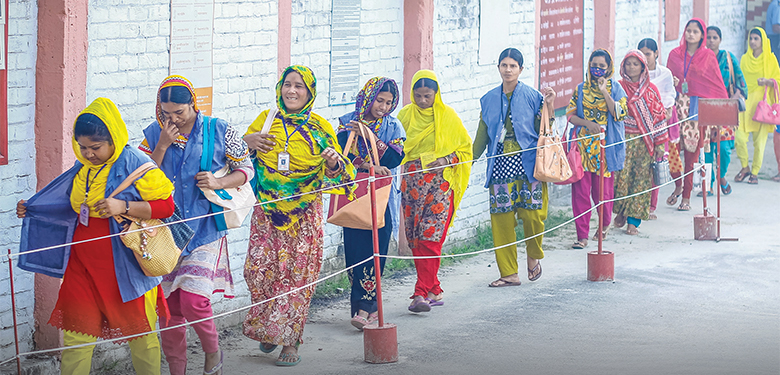
Rethinking social impact programs to support communities along the supply-chain
Though corporate social responsibility has emerged as an inescapable priority for business leaders, there remains a large disconnect between CSR efforts and business strategy. It wasn’t until recent years that companies realised that social impact programs could be strategically designed in a way that supports business goals and drive tangible value.
We are seeing a fundamental change in the way businesses approach social investments and sustainability. More CEOs and senior leadership are working closely with their CSR teams moving towards a more strategic approach, developing social impact programs aligned with their business challenges and priorities.
Cargill changing education in rural Indonesia
Cargill Tropical Palm Holdings’ plantations in South Sumatra and West Kalimantan Indonesia employ around 17,000 people. The region is a key sourcing area for an array of agriculture products and as such it has a very competitive labor market. In this context Cargill initially chose to attract workers by offering competitive employee benefits quickly realizing that these recruitment and retention challenges should be considered and addressed as a much broader social issue.
Cargill began assessing the parental needs of their employees. As a rural area, public schools did not always exist in proximity to the plantation. This not only meant that children spent the day unattended, it meant an entire community of children would not reap the benefits of an education.
In response, Cargill launched Yayasan Harapan Masa Depan Cerah (YHMDC) – The Foundation for Hope in a Brighter future in 2012 to provide education to their employees’ children. Not only would this give Cargill’s community access to education and a doorway to future opportunity, but it would differentiate Cargill as employer and attract and retain scarce labor.
To date, the Cargill supported foundation boasts:
- a total of 42 schools;
- a dedicated team of 249 teachers and headmasters;
- and 6,000 active students.
Christen Ekawati, YHMDC school and education manager says “When children receive a better education, doors to opportunity are opened. That is why we encourage them to dream and to aspire to become better. Even better than their parents. […] Here we teach our students to become leaders of tomorrow. Be it academically or in other fields.”
Students are not the only focus of the programme; teachers also benefit from YHMDC’s initiatives. The foundation conducts regular training for staff inviting teachers from other surrounding schools to join as well, therefore helping to raise the quality of education in the region.
So, how can your business create a social impact program that benefits both communities and business objectives? And how can you ensure it drives a significant impact?
Picking a social cause that is intrinsically connected to your business is the key. Companies often struggle with the question of how and where to direct resources and employee energies. Combining efforts behind a single cause allows for a more powerful contribution and, presumably, impact.
A great place to start is by looking at the Sustainable Development Goals, the United Nations’ 15-year framework for tackling the world’s most pressing social issues, from ending poverty to protecting the planet. The UN has specifically called upon businesses to do their part in achieving the goals, starting with conducting business responsibly, and then pursuing opportunities to solve societal challenges through business innovation and collaboration.

A shining example of the importance of finding the right non-profit partner comes from the Center for Child Rights and Corporate Social Responsibility (CCR CSR), a pioneer in advising businesses on child rights since 2009. Their services and expertise help businesses embrace sustainability strategies, programs and projects that permanently improve the lives of children, young workers and working migrant parents in supply chains across Asia.
Helping companies support migrant parent workers along their supply-chain
The Center for Child Rights and Corporate Social Responsibility (CCR CSR), working closely with Save the Children, has been a pioneer in advising businesses on child rights since 2009, with the objective to help businesses develop programs that permanently improve the lives of children, young workers and working migrant parents in supply chains across Asia.
In China, over 260 million people have left home in search of work, and 62 million children have been left-behind by parents due to this mass migration. According to a CCR CSR study, more than 40% of working parents had to leave their work or admit making errors at work due to worrying about their children.
CCR CSR’s Child Friendly Spaces program provides a safe child-care centre in the factories for parent-workers who face the choice of leaving their children home unsupervised or bringing them to the factory floor.
These spaces provide an alternative where children can learn, play, and build social skills in a safe environment; allowing parents and children to be together and to increase worker’s satisfaction. The benefits are clear:
- Children can play and remain in contact with their parents on a daily basis
- Family relationships, but also in employer-employee relations are improved
- Recruitment and training costs are reduces due to increased worker loyalty
CCR CSR has already partnered with companies such as Disney, Samsung or Ikea through a number of projects across Asia, helping measure their impact through pre-assessment and post-evaluation worker surveys as well as interviews with various stakeholders including management, workers, teachers, and children.
Social impact programs like Cargill’s and CCR CSR’s serve as great examples of how to address social challenges around education while creating value throughout the business operations and supply-chain.
More companies need to consider this new way to look at the relationship between business and society, and create a framework that can identify both the negative and positive (social impacts) of their actions, finding opportunities to benefit society and themselves, determining which CSR initiatives they should address and the most effective ways of doing so.